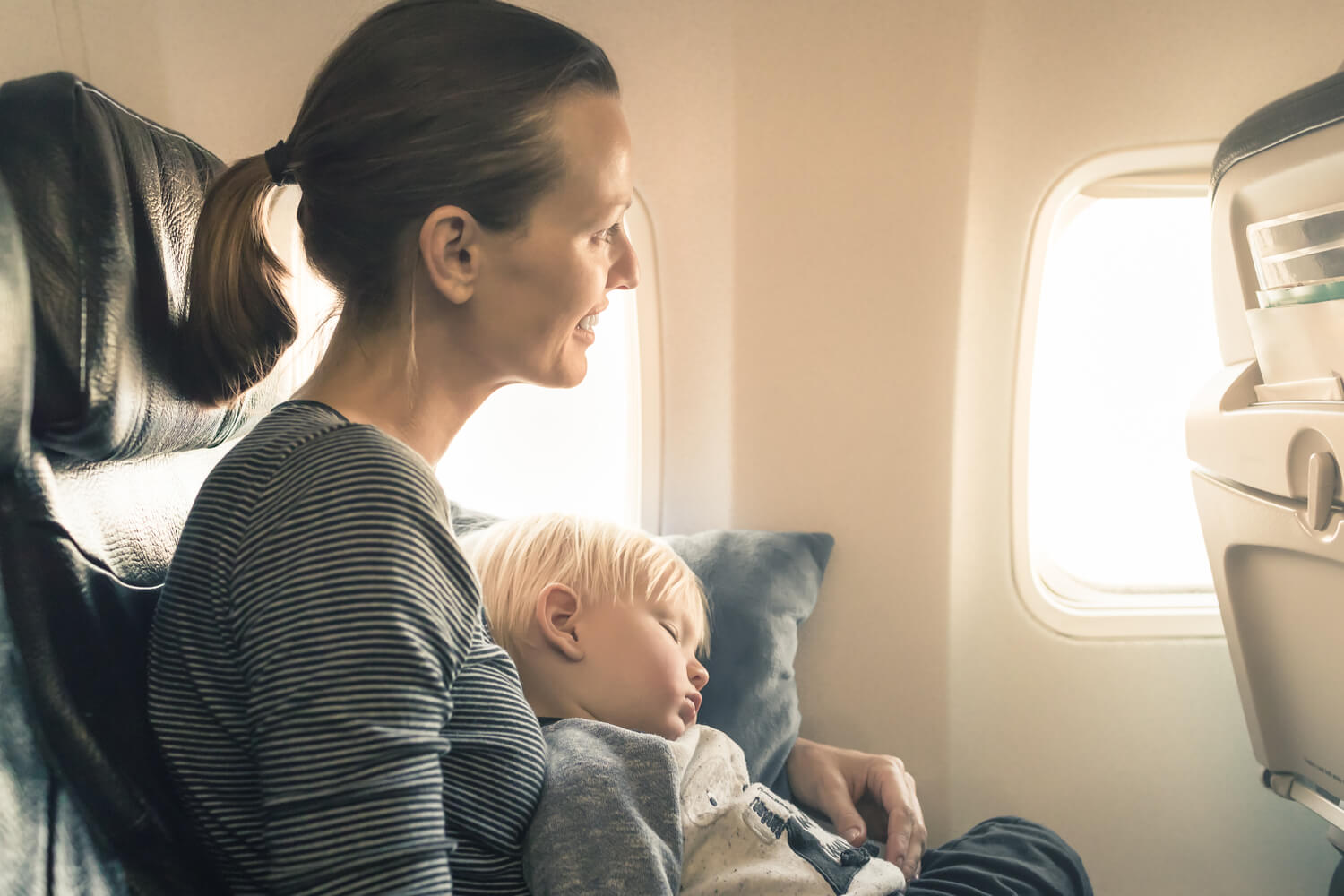
A toddler’s first flight is as significant as their first solid food, first steps, or first drop-off at school. And like all these occasions, understandably, parents get anxious when it comes to flying with a toddler. No one, not even the parents themselves, can anticipate how a toddler will respond to being on an airplane for the first time.
Toddlers may act out, may find it difficult to sit for long in one place, get bored easily, may throw a tantrum, etc. But fret not, your toddler may enjoy air travel, and even if they don’t, you will get through it. With a little preparation, the correct gear, and a willingness to make numerous lists, traveling with a toddler on a plane can be easier than you think. This article will give you some tips and tricks for flying with a toddler.
In This Article
- Preparation Before Flying With a Toddler
- What Should I Give my Toddler Before Flying?
- Top Tips For Flying With a Toddler
- How to Fly with a Toddler During COVID?
- FAQ’s
Preparation Before Flying With a Toddler
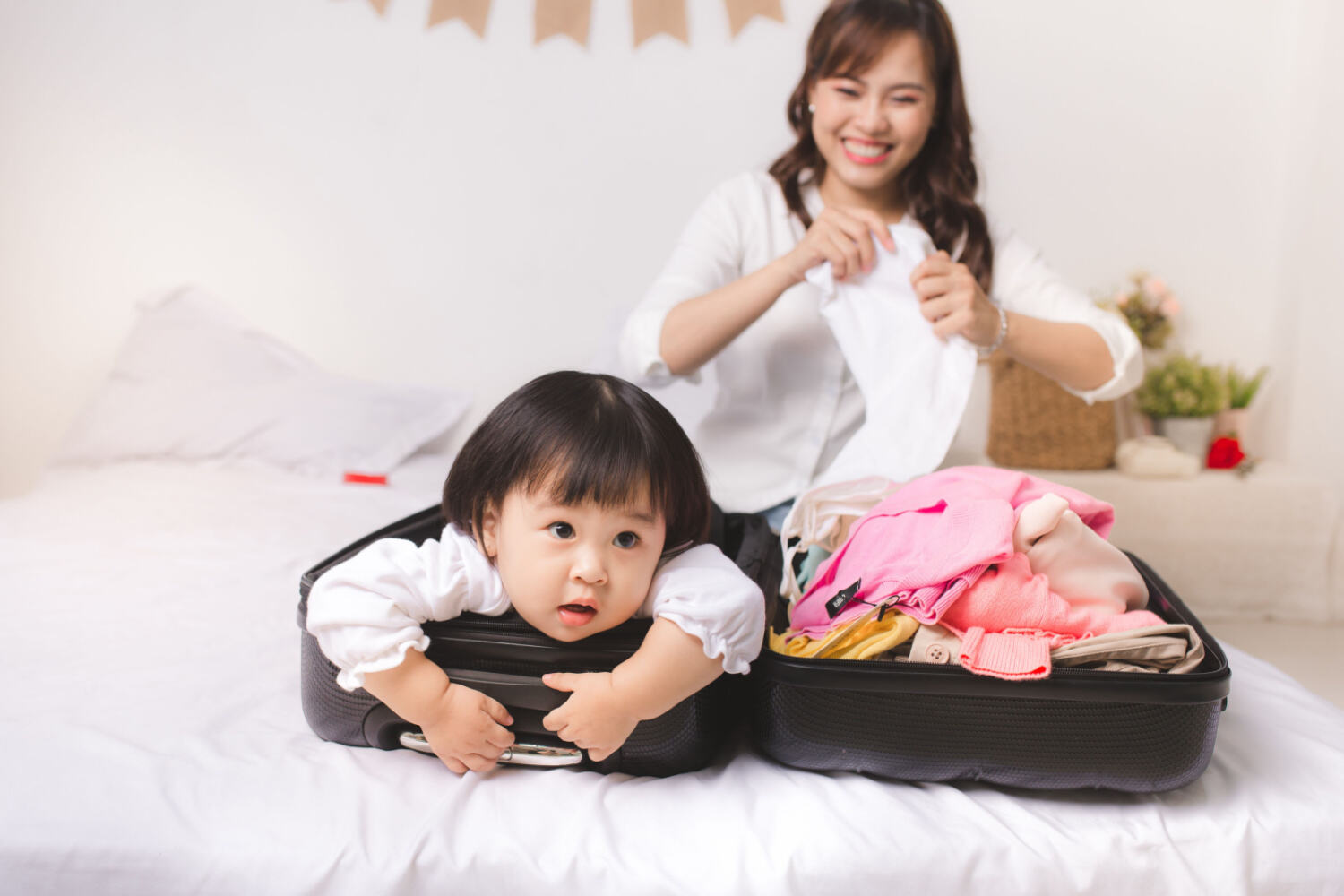
Flying with a toddler can be managed well if you do some preparation (1) beforehand. If your toddler is going to be flying for the first time, it is better to start preparing them for it by talking about the flight and showing pictures of the plane etc. Don’t underestimate the power of positive suggestions as talking to the toddler frequently about the upcoming flight in a positive and happy way will surely make them less wary when they witness a plane for the first time.
Apart from this there are several other steps you can take to make flying with your toddler less of a hassle. These are-
- Before traveling or booking the tickets, make sure the place you are going to has proper medical facilities etc. just in case any emergency arises
- Research on the flight and the airport you are going to fly from. Check whether the airport has diaper changing room, play area etc.
- Read up on the airline rules for flying with babies and toddlers. Different airlines have different rules for traveling with toddlers
- Many airlines offer front row seats for families traveling with babies and kids. Some airlines also offer bassinet facility for babies and toddlers. So, while booking the flight check all this beforehand and make an informed choice
- If your toddler is sick by any chance or even has a slight condition like a cough or cold, avoid traveling. Any sort of illness causes discomfort to the kids and makes them fussy. Traveling with a fussy toddler will not be easy
- Check if there is a diaper changing facility inside the plane. You can do this by calling up the airlines office
- Before traveling look up on the items which you can take with you in the flight as hand luggage. Check which food items, milk, etc. you can carry with you, and how
- Talk to someone in your own circle who has traveled with a toddler in flight. They will give you first hand information on things to do and what to expect etc.
- See if the airline you plan to travel in offers early check in etc.
- If you are flying with a toddler on your own, then check if you can get assistance at the airport. Several airlines and some airports offer assistance to single travelers with babies and toddlers. It may be free but can come at a charge too. Better check before your trip so you are better prepared
- Book cab or arrange for your pick up vehicle well in advance to avoid last minute rush on the day of the trip
- Make a list of all the items which you need to carry with you to the airport and double check to keep everything with you
What Should I Give my Toddler Before Flying?
To avert a round of shrieking, give your toddler a feeding bottle, snack, or sipper during landing and take-off. Another great tactic is sticking a pacifier in their mouth. For older toddlers, give them a lollipop or a piece of toffee (sucking and chewing can also assist in popping their ears).
Top Tips For Flying With a Toddler
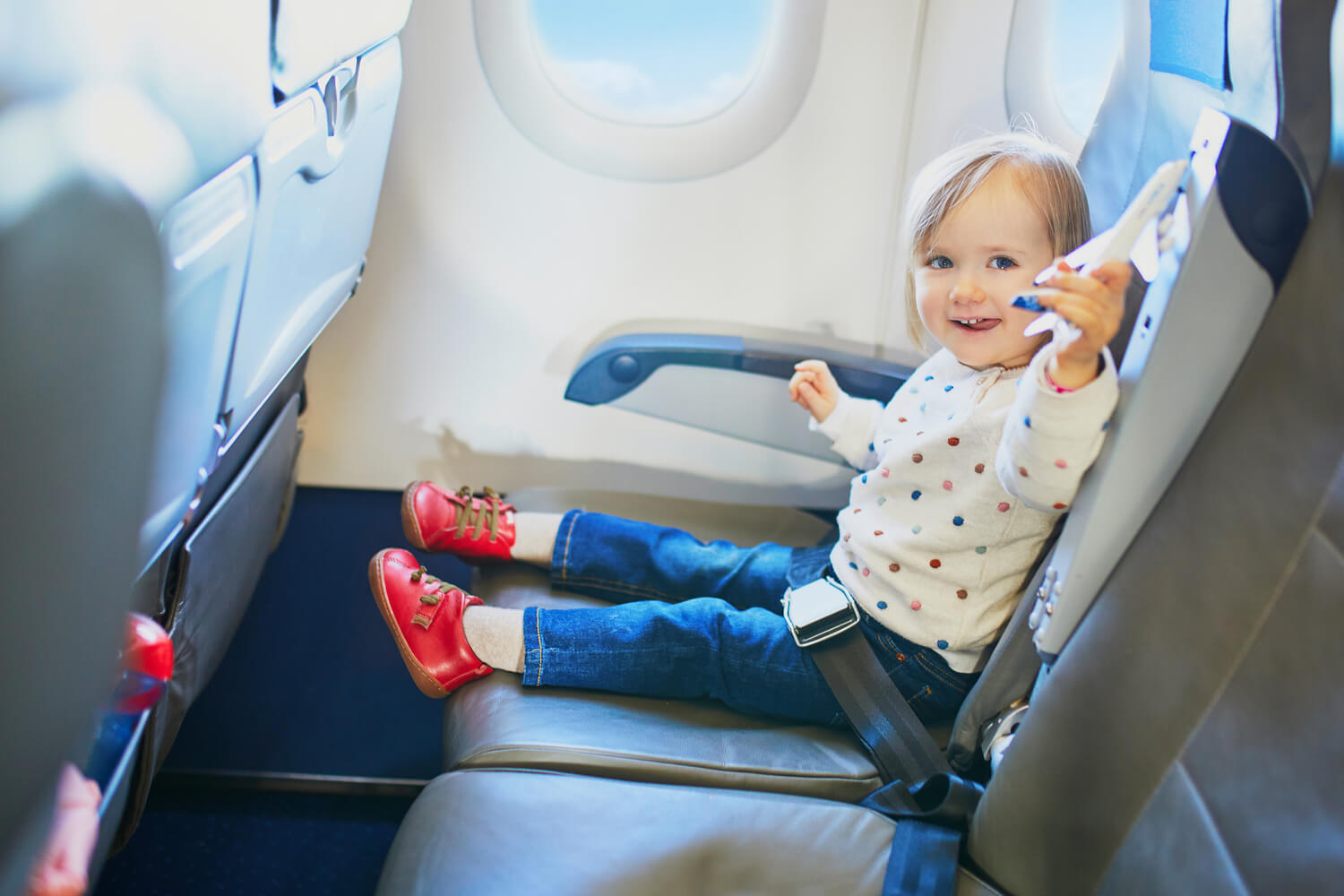
Here a few practical and effective tips for traveling with a toddler-
1. Choose a Direct Flight or One With a Long Stopover
It is imperative to keep the number of connecting flights minimum as a parent of a toddler. Landing is typically what puts pressure on those little ears, causing the painful sensation that makes toddlers cry on airplanes. Plus, little time spent in transit means fewer chances for a mid-flight fit.
2. Book a Separate Airplane Seat For Your Toddler
During a long flight with a toddler, it is recommended to book a separate seat for your toddler, even though lap children under age two typically fly free. Not only is this the safer alternative, but also it gives your family more elbow room to spread out and unwind on the flight.
3. Rent Equipment For Traveling
To lighten up your burden in the airport and avoid luggage fees, consider rental traveling gear like a carrycot, car seat, or stroller. This service is accessible in locations around the globe for traveling families.
4. Carry Double The Essentials
During air travel with a toddler, your flight may, unfortunately, be postponed or canceled. In that situation, the last thing you want to deal with is a hungry, thirsty, or soiled toddler. Carry twice as many bottles, food, formula, diapers, and snacks on the flight as you anticipate you will require.
[Read : 10 Healthy Baby Food and Toddler Food Ideas While Travelling]
5. Dress The Toddler in Comfy Layers
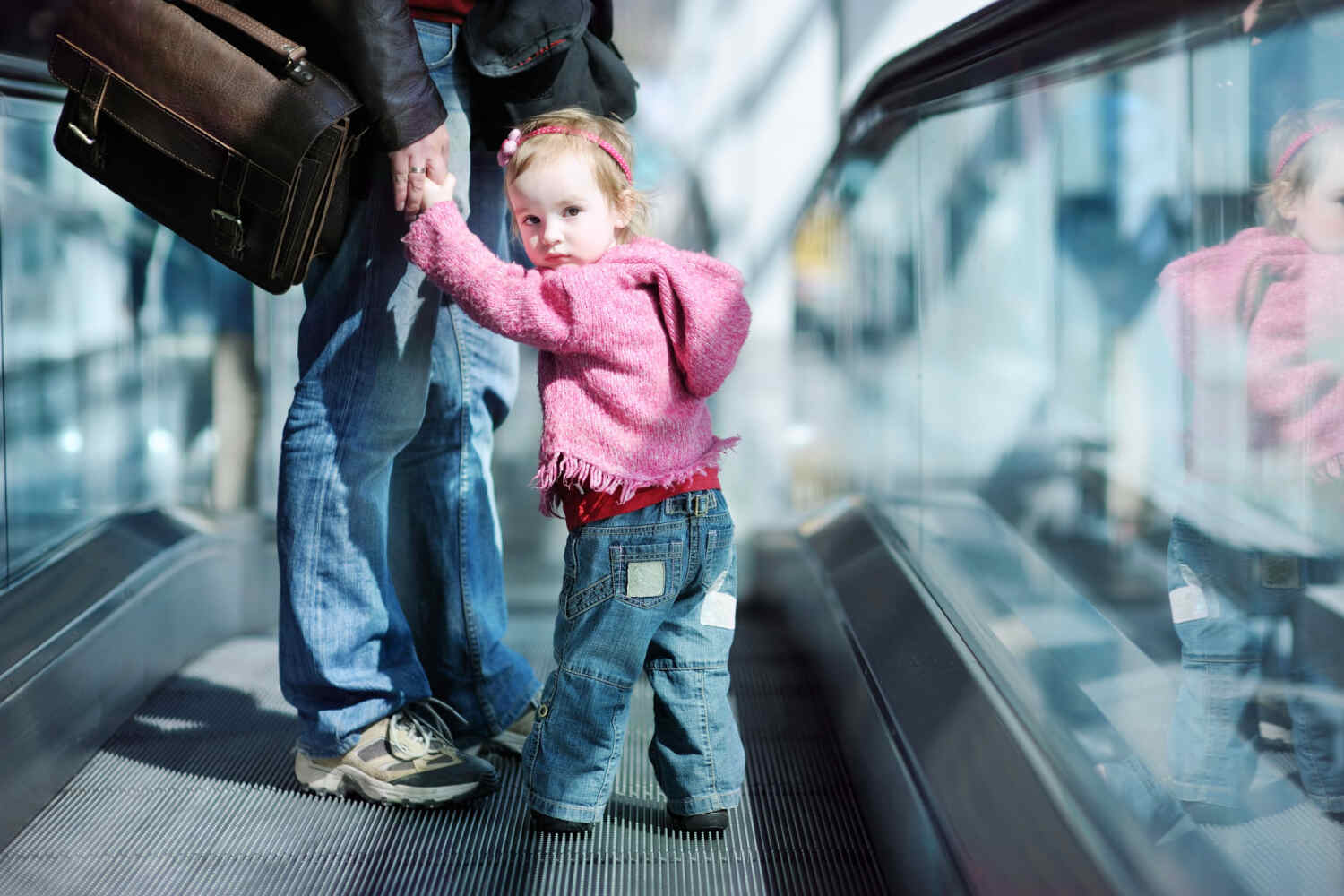
Consider comfort and convenience first. Select a dress that is cozy and simple to change. Layers aid with drastic alteration in temperature onboard the flight. Wearing layers is also assistive for breastfeeding mothers. Wear a cloak of any kind that can double as a blanket, or carry a nursing cover. Airlines can also provide with a blanket in case you need it. But it’s better to carry your own blankets etc. for hygiene sake.
6. Carry an Extra Set of Clothing
While traveling with toddlers on planes, you will want to carry an extra set of clothing in your handbag in case of a disastrous blowout mid-flight. To avoid any difficulty, pack a compact dress for yourself into the handbag, too.
7. Don’t Forget Medication
Make sure to carry any prescription drug and OTC medication for you and your toddler (2). Fluid medicines are exempted from liquid limits. Be sure to keep them in their original packing so they are easily recognizable. Carry medicines in your handbag for easy retrieval during the flight.
8. Visit the Airport Washroom Prior to Your Flight
Ideally, you should board the flight with a dry-diapered toddler. Hence, be sure to hit the airport washroom one last time before checking in.
9. Gate Check Baby Gear
At no extra cost, most airlines permit caregivers and parents to gate-check big baby gear like car seats and strollers. Just request gate check labels from the attendant at the check-in gate. Assign one label to each unit and deposit it at the check-in counter of the airlines. Fold the stroller ahead of boarding.
Please note that airlines allow taking the stroller till the airplane boarding gate. So, in case you don’t want to check in the baby gear like stroller or feeding pillow etc., you can carry it with you. The stroller will go till the airplane gate and from there the flight crew will take it from you. You can collect it from the baggage belt after deboarding the plane. Feeding pillow (if you are carrying) can go in hand baggage and you can take it with you inside the flight.
10. Take Advantage of Preboarding/Priority Boarding
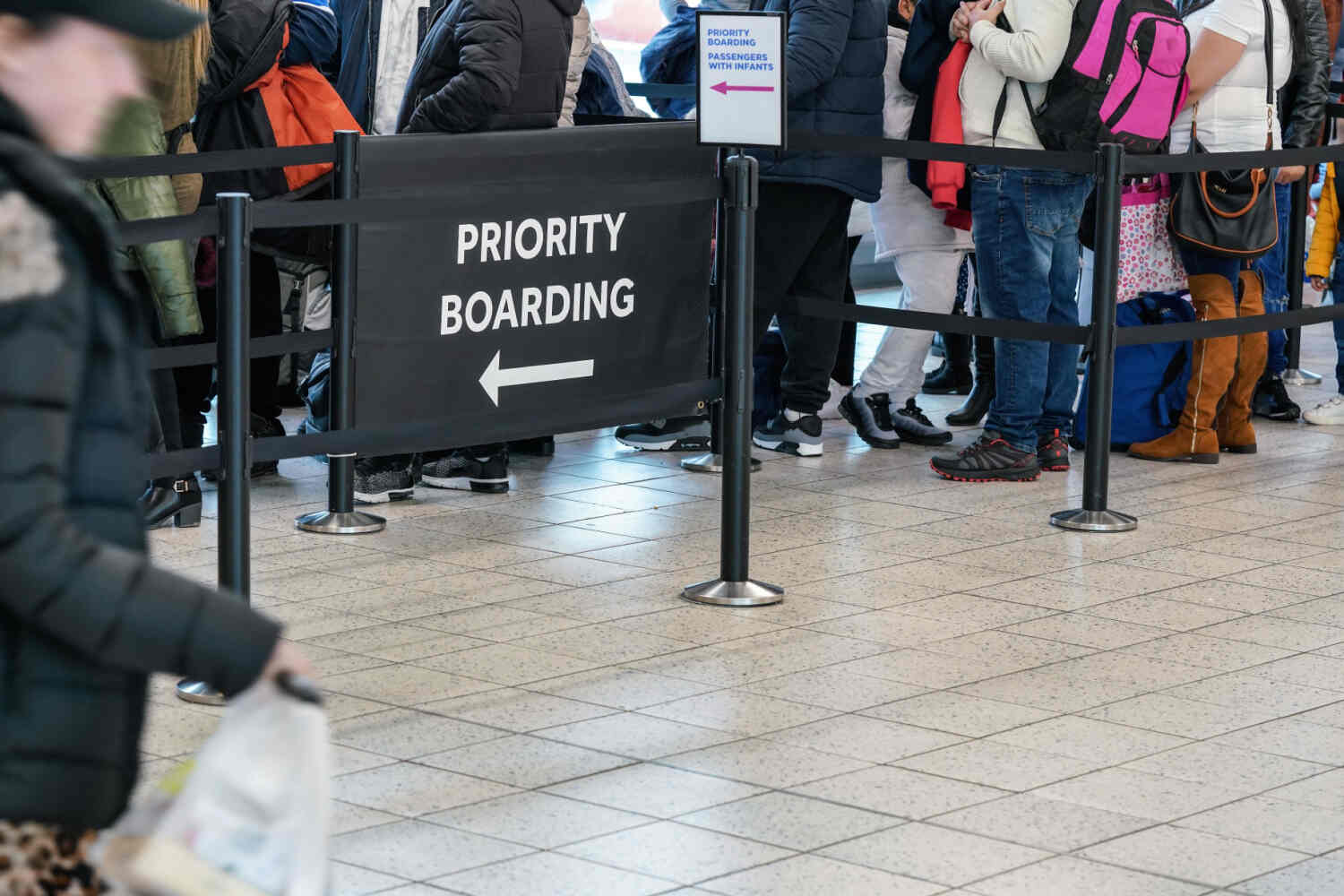
You might consider you should skip the preboard to ensure spending as little time as possible on the flight with your toddler, but getting settled onboard a flight takes more time with a young kid. Flying with a toddler is nerve-racking enough without having other travelers behind you sighing as you attempt to buckle them.
11. Keep Your Toddler Buckled
Buckled securely into a car seat or other authorized gear is the safest spot for a toddler on a flight, particularly in case of unforeseen bad weather.
12. Protect Ears While Flying With a Toddler
Chewing or sucking eases ear pain triggered by pressure variation in the flight’s cabin. Carry formula or expressed breast milk in a feeding bottle and ask your toddler to suck it during the landing and take-off. Giving the toddler a sipper or pacifier is also a good idea. Chewing a cookie or biscuit can also help older toddlers.
Pop plastic earplugs or cotton into their ears at the beginning of the flight’s descent to decrease pain and pressure. Also, get a pediatric ear drop from your child’s doctor before your flight with your toddler.
[Read : Dealing With Kid’s Ear Pain While Flying]
13. Keep Your Toddler Engaged With Distractions
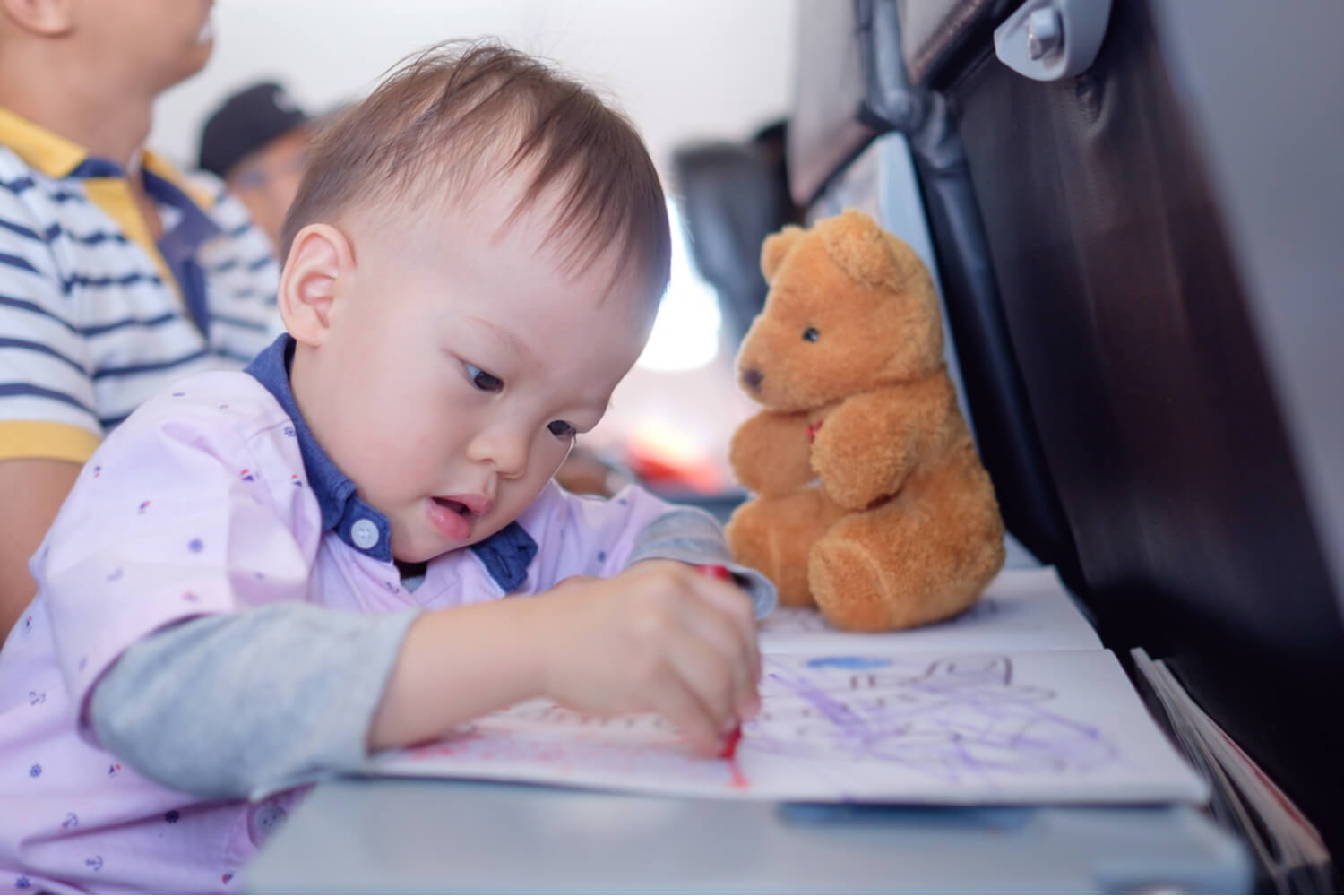
You may spend your whole flight keeping your toddler engaged. Read board books, purchase the correct traveling toys and actively play with your toddler. Spoil your toddler with movies and rhymes. The bottom line is, you want to keep your toddler in a good mood onboard the flight using whatsoever way you can!
How to Fly With a Toddler During COVID?

Curtail your toddler’s movement by putting them in the stroller or carrying them once they are inside the airport. Maintain social distance from other passengers, and encourage your little one to do the same. Sanitize their hands frequently as toddlers have a habit of touching anything and everything. Toddlers above the age of two should wear a mask and face protective covering.
While airplane travel with toddlers can be difficult, it’s not unachievable. With a little research and preparation (3), you can fly with your toddler and (possibly) even enjoy it. Some airlines go the extra mile to make the experience gratifying. So, take a breather, organize, and pack cleverly. Follow these tips we have mentioned in the article and flying with a toddler will no longer be a dread. Happy journey to you and your toddler!
FAQ’s
1. Can we Take Long International Flights With a Toddler?
If your toddler is used to flying and is comfortable onboard a flight, then it is ok to travel long distance on flight. But, if it’s a new thing for them or they are going to be flying first time, it is better to avoid long distance international travel unless absolutely necessary. In case, its essential to travel, then opt for flights with long layovers so that your toddler gets some time on the ground and can rest and sleep well in a hotel. Long distance flights can be very tiring and cumbersome for a toddler. Better to break down your journey and ensure the little one and you get proper resting time.
2. Do I Have to Buy a Flight Ticket For my Toddler?
No. Kids above the age of 2 days and under the age of 2 years come under the ‘infant’ category and do not require a separate ticket (4). But, the airline will ask for their age proof like birth certificate, mother’s hospital discharge summary, their vaccination certificate, their Aadhar card or passport at the time of check-in. Also, infants do not get their own separate seat. When flying with a toddler below 2 years of age, you will need to hold them in your lap.
3. What Are Some of The Risks Involved While Traveling With my Kid Both in India And Abroad?
Some of the common risks or concerns you may face while traveling with toddlers and young kids are- sickness, infection, it can be tiring, hygiene issues at some places, may have to depend on outside food or water in some places, lack of proper medical facilities in some places, always have to be on guard especially while traveling alone with kids, etc.
4. Do You Need an Identity Proof For a 2-Year-Old Toddler While Traveling on Domestic Flight in India?
No. An infant or minor does not need an identity proof when they are traveling with parents or guardians who have their own valid IDs.
5. Does my 2.5-Year-Old Need a Plane Ticket?
Yes. Kids older than 24 months or above the age of 2 years need a ticket to travel on a flight.
References
- Guidelines For Parents Traveling with a Child – [https://iapindia.org/pdf/IAP-Travel-Guideline-for-Parents-Ch-010.pdf]
- Air travel and children’s health issues – [https://www.ncbi.nlm.nih.gov/pmc/articles/PMC2528660/]
- Air travel and children – [https://www.ncbi.nlm.nih.gov/pmc/articles/PMC2528662/]
- Infants Travel – [https://www.goindigo.in/travel-information/en/infants.html]
Read Also: 12 Tips To Travel Safe With A Toddler
